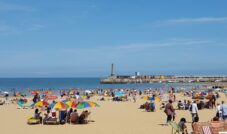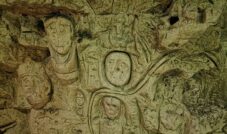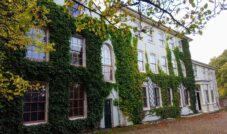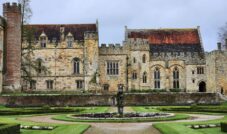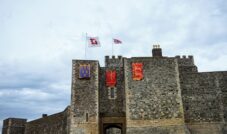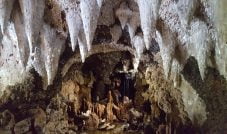Hall Place and Gardens is one of my favourite green spaces in Dartford.
It’s easy to spend a few hours waking around the perfectly manicured gardens, flowers and admiring the beautiful Tudor house.
Where else can you hold baby owls in Kent?!
Hall Place Jambs Owls
Learn everything there is to know about owls, see different species and even hold them! I think the owls were my favourite part of Hall Place and Gardens. Even if some of the owls were massive…



Hall Place Butterfly House
I love visiting Botanic Gardens (see my photos of the Barbican Conservatory, Belfast Botanical Gardens and Kew Gardens). While Hall Place’s is a lot smaller, it’s definitely worth visiting as you can see from my photos below.












Hall Place Gardens
Hall Place is perhaps most known for it’s incredible topiary. It was fun trying to work out what they were – some were easier to guess than others! The gardens are award winning, having won the Civic Trust’s Green Flag award every year since its inception in 1996 and also have coveted Green Heritage Site status. The gardens are free to visit too.



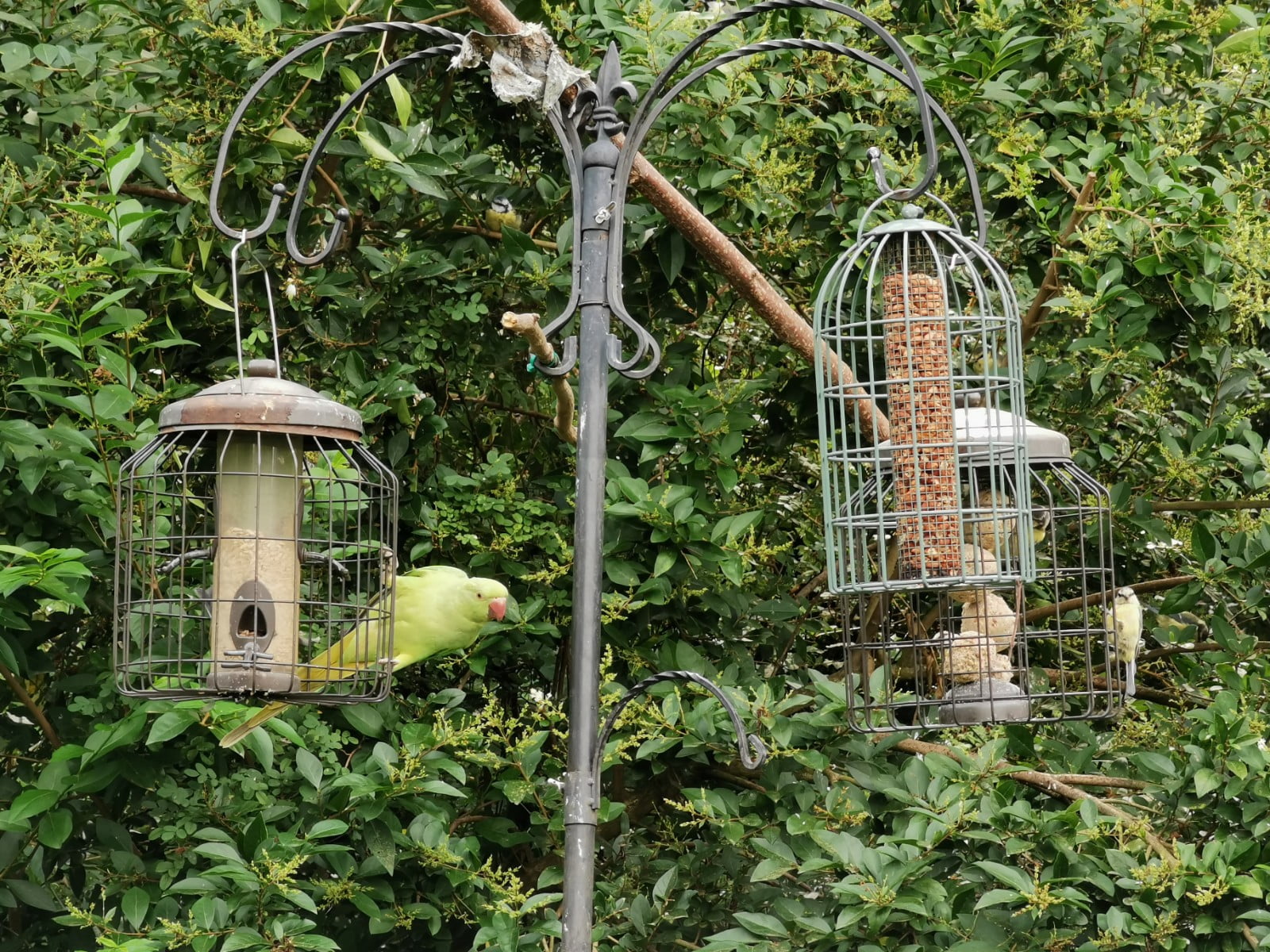









Hall Place House
What is the history of Hall Place Gardens?
- Medieval Origins: The site of Hall Place has medieval origins, with the first recorded mention dating back to 1241. The estate was initially a substantial family residence.
- The Walsingham Family: In the 16th century, Hall Place became the property of Sir John Champneys, a wealthy merchant. In 1537, Sir John’s daughter, Cecily, married Sir William Sidney, and the estate passed into the ownership of the Sidney family, including the famous Sir Philip Sidney.
- Tudor and Stuart Periods: Under the Sidneys, Hall Place was expanded and improved. The house underwent renovations in the Tudor and Stuart styles, and the gardens were likely developed during this period.
- 18th Century: The estate went through various owners in the 18th century, including the Austen family. Changes were made to the gardens during this time, adapting them to the prevailing landscape design trends.
- Famous Residents: In the 19th century, Hall Place had several notable residents, including Sir Francis Dashwood, founder of the Hellfire Club. Subsequent owners, such as Sir John Champneys and Sir Thomas Townshend, made further modifications to the estate.
- Bexley Urban District Council: In the early 20th century, Hall Place became a public park. The Bexley Urban District Council purchased the estate in 1926, preserving it for public enjoyment.










History of Hall Place And Gardens
Hall Place is a Grade I listed Tudor manor house in Bexley, Kent, built in 1537 for Sir John Champneys, a wealthy merchant and former Lord Mayor of London. The house was constructed using stone from the dissolved Lesnes Abbey and features a striking checkerboard pattern of flint and rubble. In 1649, Sir Robert Austen added a red-brick wing, creating a dramatic contrast in architectural styles.
Over the centuries, Hall Place passed through several prominent families, including the Dashwoods, one of whom founded the infamous Hellfire Club. During World War II, the house was used by the US Army Signal Corps as a secret intercept station, contributing to the Enigma code-breaking effort. The estate became public in the mid-20th century and has since been restored and opened for tours and events. Today, Hall Place offers a rich blend of Tudor history, wartime intrigue, and beautifully landscaped gardens along the River Cray.
10 Interesting Facts About Hall Place And Gardens
- The house was built using recycled stone from Lesnes Abbey.
- Its two halves — Tudor and Stuart — are built in contrasting styles.
- Sir Francis Dashwood, founder of the Hellfire Club, once owned the estate.
- The US Army operated a secret intercept station here during WWII.
- The Queen’s Beasts topiary was planted in 1953 to mark Queen Elizabeth II’s coronation.
- Lady Limerick added mock-Tudor features and chess-piece topiary in the 1920s.
- The gardens span 65 hectares and include a tropical butterfly house.
- The Great Hall was converted into a radio intercept room during the war.
- The estate has won the Green Flag Award for over 20 consecutive years.
- The house has appeared in The Crown and other TV productions.
Things to See and Do at Hall Place And Gardens
- Tour the Historic House
Join a guided tour to explore nearly 500 years of history. See the Tudor kitchen, Great Hall, and Lady Limerick’s additions, including ornate plaster ceilings and wood panelling. - Visit the Queen’s Beasts Topiary
Admire ten large yew sculptures representing heraldic animals. Planted in 1953, they’re a unique and playful feature of the formal gardens. - Explore the Butterfly House
Step into a tropical glasshouse filled with free-flying butterflies. Interpretation panels explain their life cycles and habitats. - Meet the Owls at Jambs Owls
Hold and learn about different owl species in this hands-on experience. Staff share fascinating facts about each bird. - Walk the Gardens and Riverside Trails
Enjoy herbaceous borders, a rock garden, and riverside paths. Look out for rare trees and wildlife including kingfishers and parakeets. - Ride the Miniature Railway
Open seasonally, this small train delights children and adults alike with a scenic loop through the gardens. - Visit the Art Gallery and Exhibitions
Browse changing displays in the converted stables, featuring local artists and historical exhibitions like “Code Name: Santa Fe.” - Relax at the Riverside Café
Enjoy drinks, cakes, and light meals with views of the River Cray. Outdoor seating is available in warmer months. - Shop for Plants and Gifts
Pick up garden plants, souvenirs, and locally made items at the gift shop and plant centre. - Attend Seasonal Events
Join outdoor theatre, farmers markets, and family trails. Events run year-round and often include live music and storytelling.
Practical Information For Visiting Hall Place And Gardens
- Location: Bourne Road, Bexley, Kent DA5 1PQ
- Opening times: Gardens open daily 9:00 am – dusk; house open for pre-booked guided tours
- Entry: Gardens free; house tours from £8.50 adults, £5 children; butterfly house and owl centre separate fees
- Parking: Free on-site; disabled parking near main entrance
- Accessibility: Gardens mostly accessible; house via stairs only; assistance available
- Dogs: Not permitted in gardens or house, except assistance dogs
- Food: Riverside Café and Miller & Carter Steakhouse on site
- Toilets: Accessible facilities available
- Nearby: Danson Park, Red House, Crayford Greyhound Track, Bexleyheath town centre




